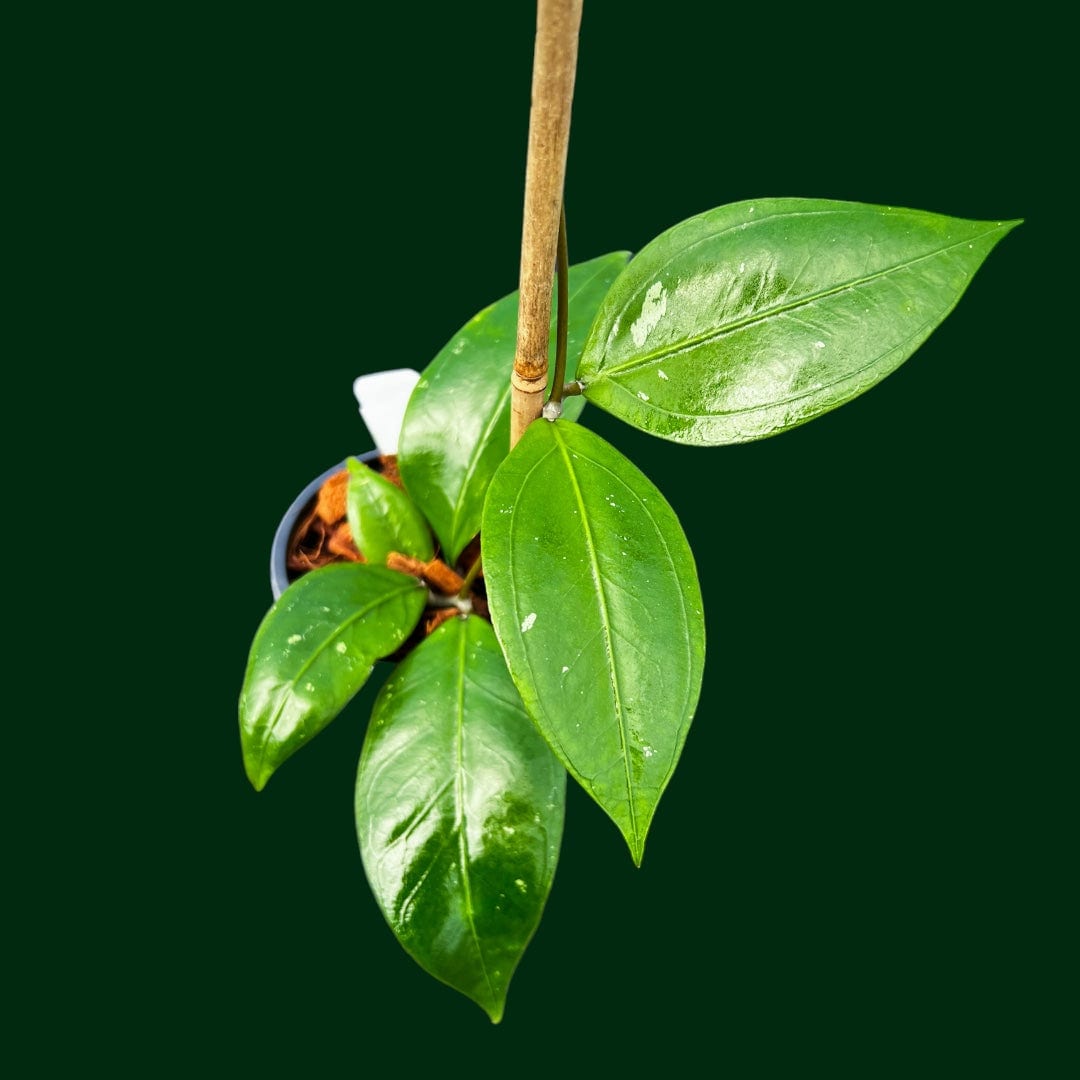Hoya Carnosa - Plant Care Guide

Table of Contents
- Light
- Watering
- Soil
- Temperature and Humidity
- Fertilizing
- How to Propagate Hoya Carnosa
- Common Pests and Diseases
- Toxicity to Cats
- The Bottom Line
Hoya carnosa plants are known for their wax-like leaf appearance, so it shouldn’t come as a surprise that ‘wax plant’ is the name they’re second most commonly known under. They’re pretty low maintenance plants that can be grown both indoors and outdoors, and if you take care of them right, they will reward you with rich blooms.
So, how to care for hoya carnosa properly? You can learn all about it in our hoya carnosa care guide.
Light
As far as light requirements go, *Hoya carnosa* does not like direct sunlight - it thrives best when indirect sunlight is provided. While low light is not a dealbreaker for this plant, it will most likely cause it to significantly slow down the growth, so if you want to be blessed with vibrant blooms, achieving the right light conditions is essential.
During winter months, when access to light might be limited, it’s best to use a growth light to help them get through the unfavorable conditions. Rotating your *Hoya carnosa* plant regularly is also a good idea.
Watering

Hoya carnosa is a semi-succulent plant, so it retains water in its leaves. For this reason, it doesn’t have to be watered as often, as it’s very easy to provide it with too much water. It’s best to wait until the top one or two inches of the soil have dried out before watering again to not overwater the plant.
So, how often to water Hoya carnosa?
Soil
Hoyas in general like well-draining soil, and Hoya carnosa is no exception. Coco husk is a good example of a hoya-adapted soil, as regular potting mix tends to be too heavy for them. If you want to, you can use it, but never on its own - combine it with perlite and orchid bark which will improve the drainage and help in preventing root rot.
Temperature and Humidity

Hoyas are not very demanding when it comes to the right temperature and humidity. They thrive when provided with temperatures between 60 and 80 degrees Fahrenheit, although lower ones also aren’t that much of a problem - you just need to make sure they don’t fall under 50 degrees Fahrenheit, as that can slow down their growth.
As for humidity, regular room humidity should be enough in most cases. If you have dry air in your home, consider adding a humidifier somewhere close to your *Hoya carnosa* plant. Other ways to improve humidity around your plant include placing it in a room that is naturally humid, such as the bathroom, as well as grouping more plants together or misting your *Hoya carnosa* plant regularly, ideally with rainwater.
Fertilizing
Hoyas are not heavy fertilizers - in fact, many will grow just as beautifully without any additional help. Still, using some won’t hurt, so if you decide to do it, make sure that you’re using a balanced liquid fertilizer specifically for hoyas, or one for all indoor plants. Once a month during their most active period, so spring and summer, will work wonders.
How to Propagate Hoya Carnosa

Propagating your Hoya carnosa plant is actually very straightforward. Here’s how the process looks:
- Choose the right stem: Picking the wrong stem can make a world of difference between whether your cutting will develop roots or not. Choose one with at least three nodes, and remove it from the plant using sharp pruning shears or scissors.
- Prepare your stem: Grab your stem and remove the bottom one to two leaves so that the nodes are exposed. Leave some leaves at the top of your cutting.
- Place your stem in water: Take a small container, fill it with water, and place your cutting in it. Keep the leaves you left above the surface.
- Let it grow: Just like mature hoya plants, your Hoya carnosa cutting will also grow best when exposed to bright, indirect light, so find a spot for it that fits those criteria. Make sure to replace the water in it once a week.
- Pot it: Once roots have grown to about 1 to 2 inches, you can pot your cutting in a well-draining soil. Once you pot it, follow the care instructions we discussed above.
Common Pests and Diseases
Hoyas, just like any other plants, are no stranger to common plant issues. Some of those include:- Overwatering and root rot - This is probably the most common issue for hoya plants. As they are semi-succulent, they retain water in their leaves, so overwatering them is easier than in the case of other plants. Once that happens, they are significantly more prone to developing root rot, which can be deadly to your plant.
- Insects issues - Hoyas are pretty resistant to insects, so if your hoya does have an infestation issue, it was most likely caused by the insects appearing on your other house plants first. Most common bugs bothering hoyas include aphids, mealybugs, scale insects, and spider mites.
- Temperature fluctuations - Hoyas are pretty resistant to temperature, but that does not mean that they are invincible. In fact, if you keep exposing your hoya plant to severally different temperatures, it will affect your plant negatively.
- Fungal diseases - Hoyas can develop fungus when exposed to an environment encouraging fungi growth. Not enough airflow and overwatering your plant are two common causes.
Toxicity to Cats
Hoya carnosa is considered a non-toxic plant for cats, making it a perfect addition to plant collections in households where there’s a feline friend. Still, try to keep it out of their reach so that they don’t accidentally knock it down and break it.
The Bottom Line

Hoya carnosa can be a great addition to any outdoor or indoor space, but in order for it to grow beautifully, you need to know how to take care of it properly. The good news is that they aren’t that demanding, so even if you don’t have a green thumb, you shouldn’t have a problem with growing a gorgeous hoya as long as you do your research. Good luck!











